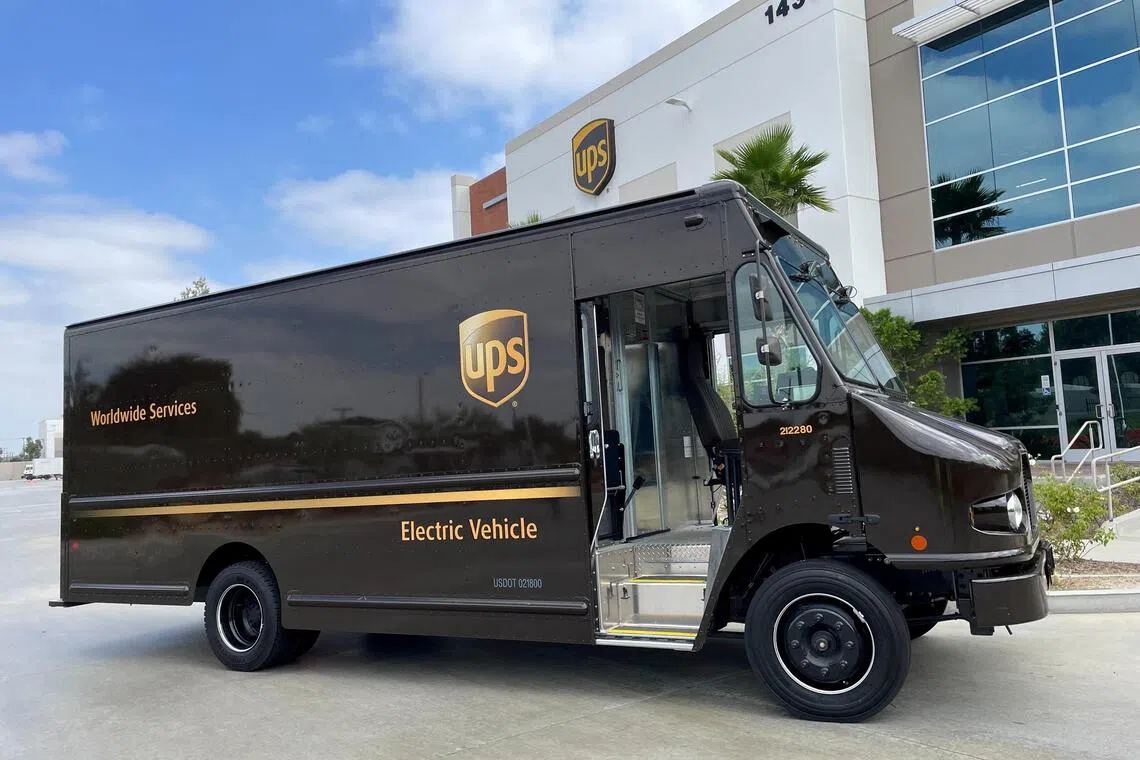UPS, FedEx scramble to shore up networks drained by deadly crash
The grounding has drained capacity and complicated operations for the world’s largest package delivery companies just as shipping volumes surge for the peak period to Christmas
[NEW YORK] United Parcel Service (UPS) and FedEx are working to secure enough freighters as they grapple with a ban on a pillar of their air-cargo fleets through the crucial holiday delivery season, and potentially beyond.
An indefinite grounding of the workhorse MD-11 jet is in place as investigators probe why an engine tore off a 34-year-old widebody just as it took off on Nov 4. The resulting crash killed 14 people.
The grounding has drained capacity and complicated operations for the world’s largest package delivery companies just as shipping volumes surge for the peak period to Christmas. The crash also injected new uncertainty into planning for an aircraft that was already approaching the end of its service life.
“It’s creating a real capacity crunch for UPS and FedEx,” said Derek Lossing, founder of Cirrus Global Advisors, a logistics consulting firm. “They will adjust their networks, but at the end of the day, they were planning on flying those aircraft.”
UPS has 26 MD-11s, about 9 per cent of its fleet. The 28 FedEx had in operation before the grounding accounted for roughly 4 per cent of its in-service aircraft.
A preliminary report from US safety investigators on Thursday (Nov 20) found evidence of fatigue cracks in the structure that attached the turbofan to the stricken plane’s wing.
The Federal Aviation Administration (FAA) is requiring thorough inspections of all 167 grounded airplanes, a number that includes models similar to the MD-11 and applies to all operators of the jets. What’s still unclear: the measures MD-11 operators will need to take to inspect and repair the engine pylon so the aircraft can return to the skies.
“It’s going to take a while. This is an area that is not easily accessible,” said former FAA accident investigation chief Jeff Guzzetti, referring to where the structure is located on the aircraft.
Prior to the NTSB’s preliminary report, analysts expected that the scale of disruption should be relatively contained, given the couriers are well-versed in dealing with snarls from weather or geopolitical conflicts.
Still, the grounding is pushing the couriers to turn to third-party charters to maintain operations, according to JP Morgan analyst Brian Ossenbeck. The outsourcing is likely to lead to higher costs for the companies.
“Protecting service during peak comes at a cost,” Ossenbeck said in a note to clients, adding that some express packages could be at risk of being slowed down.
A representative for UPS declined to speculate on potential additional peak season costs and said the company would provide an update in its January earnings report.
FedEx said that it is cooperating with Boeing and the FAA on inspections and declined to respond to questions about network disruptions.
FedEx chief financial officer John Dietrich earlier this month said that the company is deploying spare aircraft, adjusting maintenance schedules and shipping cargo in the bellies of commercial planes.
The company also expects to return the planes to service one by one, as they pass inspections, Dietrich said during a Nov 11 investor conference. “It’s not like we are waiting for the whole fleet to be inspected before concluding whether they can safely go back into service,” he said.
The MD-11 grounding is not expected to ruin Christmas because retailers already have inventory in place, said Satish Jindel, president of ShipMatrix, a logistics data firm.
“The public should not have any concern,” Jindel said. “Let them shop all they want.”

UPS has predicted its average daily peak volumes to be down year-over-year, due in part to a planned pullback of its Amazon.com volume. Meanwhile, FedEx has said it is planning for “modest demand” during the holidays.
A protracted grounding risks pushing the companies into the unenviable position of needing to buy planes to replace lost capacity when cargo jets are in short supply.
FedEx is exploring options for such a scenario and finding almost no replacement freighters available on the secondary market, either through passenger conversions or brand-new Boeing and Airbus models, a source familiar with the matter said. FedEx declined to comment on the matter.
UPS had retired two fully depreciated jets from service in the first nine months of this year, and was planning to retire a third in the last quarter.
FedEx was on track to retire all of its 34 MD-11s by the end of 2032. The jets carried about 17 per cent of FedEx’s traffic, down from 27 per cent five years ago, according to Australia-based researcher Trade and Transport Group.
The newest Boeing and Airbus freighters are running behind schedule. Airlines are hanging onto widebody jets to move passengers, leaving few to be converted to carry freight.
UPS and FedEx will get some relief from new cargo jets, both are slated to receive from Boeing over the next two years.
Both couriers are able to tap into their truck networks to make up for some lost air capacity domestically. But finding dedicated replacement transportation on some international and long-haul routes is much more difficult.
FedEx and UPS can rely on a few dozen smaller Boeing jets in storage, but not enough to make up for its widebody workhorse, said Frederic Horst, a managing director at Trade and Transport Group.
“The MD-11 generally seems to get very high usage in the weeks before Christmas – more so than other aircraft types,” he said. BLOOMBERG
Decoding Asia newsletter: your guide to navigating Asia in a new global order. Sign up here to get Decoding Asia newsletter. Delivered to your inbox. Free.
Share with us your feedback on BT's products and services




